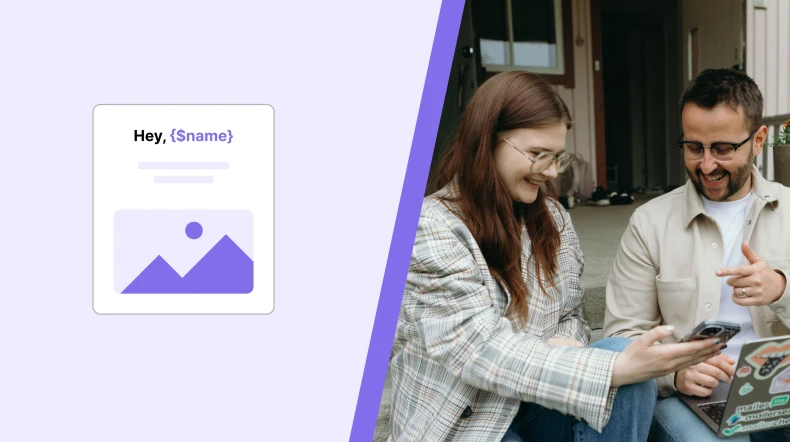Email segmentation: What it is and why you need it

Email segmentation divides your subscribers into smaller groups based on a set of characteristics that will help you deliver more personalized emails.
Every company in the world, from Google to your local bakery, wants the same thing when it comes to marketing—to have the ability to send the right message to the right person at the right time.
This can be a challenge because your subscribers have different interests, habits and needs. Sending out mass messages to everyone will come across as generic. Email segmentation allows you to create smaller groups so that you can send targeted campaigns that each set of subscribers will care about.
Once you increase relevance in your email marketing campaigns, your open rates and click-throughs will go through the roof.
What is email segmentation?
Email segmentation is a targeting technique where you divide your subscriber list into smaller audiences based on a set of characteristics that you choose. Segmentation allows you to personalize your messaging to specific people, which results in higher engagement because the topics are more relevant.
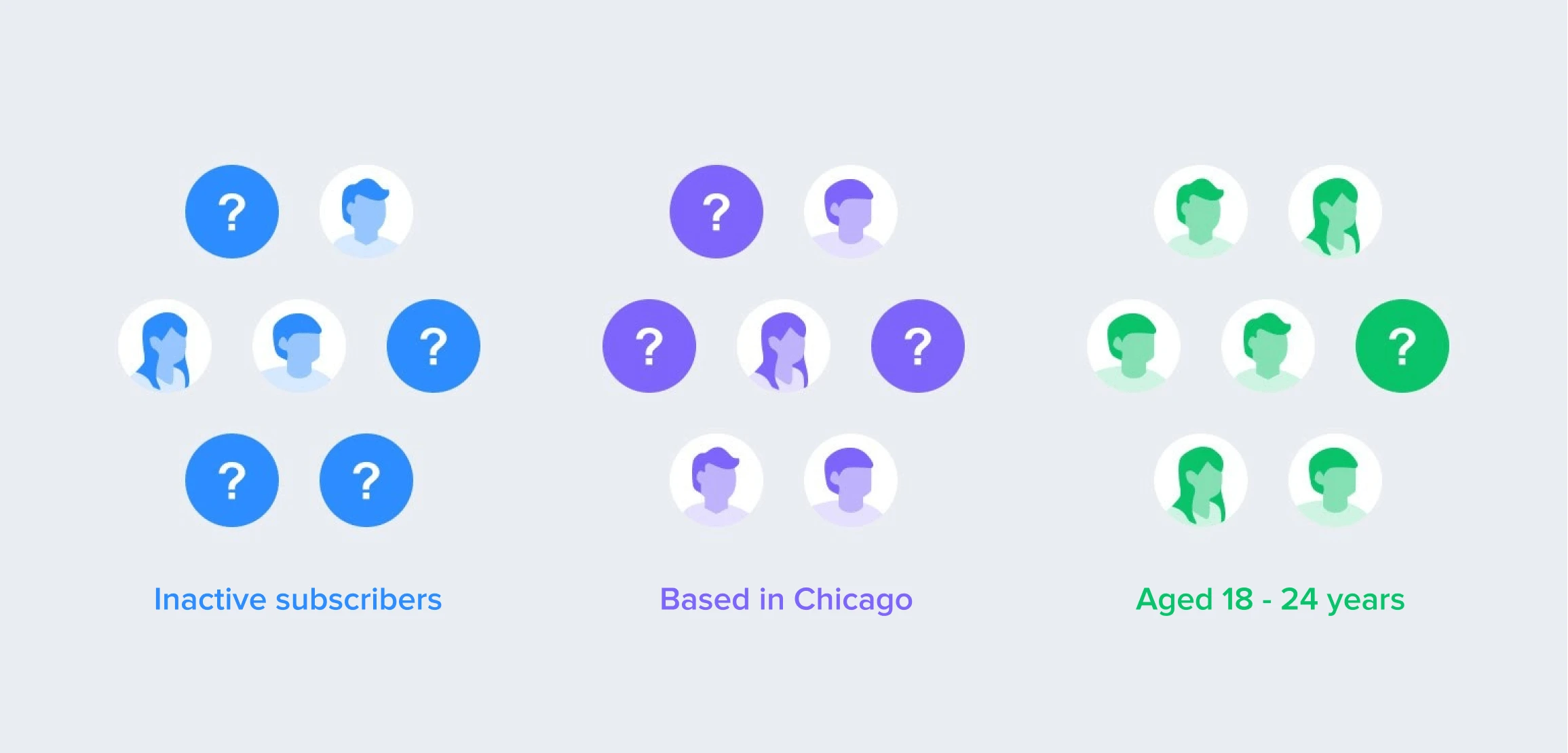
In MailerLite you can segment by several criteria including geographic location, age, behavior or whatever is most relevant to you, and the list will automatically update itself based on these criteria. Later on, we’ll be sharing lots of segmentation strategy ideas so that you have plenty of inspiration!
In MailerLite, you may notice us talking about both ‘segments’ and ‘groups’. While both features help you target subscribers with more relevant content, they are slightly different things:
Segment: A list of subscribers that is dictated by a ‘rule’. This can be created with a filter, and subscribers can only be added or removed from the list based on that rule. For example, if a subscriber joins the segment “Signed up in the last 14 days”, they will be automatically removed after 15 days.
Group: A group is not dictated by a rule. You can add and remove subscribers based on your own preferences. Groups are not updated automatically, and they only change when you personally move a subscriber, or if an automation moves them to another group.
Learn more about the difference between segments and groups.
Benefits of email list segmentation
If you have a large email list, it’s likely full of all different kinds of people with different interests. Segmentation is important because it enables you to send an email only to people on your list who care about that email. The best emails hold personalized content that is relevant to each individual subscriber.
1. Increased conversions and ROI
When you send more personalized emails, your subscribers are more likely to convert. In fact, segmented campaigns have been shown to deliver 14.32% higher open rates and 54.79% higher click-through rates than non-segmented campaigns.
2. Improved customer satisfaction
By definition, segmentation means that you’re sending the right message to the right people at the right time. This increased relevancy leads to improved customer satisfaction and can even lead to brand loyalty.
3. Reduced unsubscribe rates
When you’re sending messages that are relevant to your subscribers, they’re less likely to unsubscribe from your list. In fact, segmented campaigns have been shown to have unsubscribe rates 9.4% lower than non-segmented campaigns.
When and how to start segmenting your email list
If you’re wondering when to start segmenting, the short answer is—straight away! In the early days of email marketing, segmentation was considered an advanced feature used only by expert email marketers. Today, anyone can target their messaging using easy tools like MailerLite.
People subscribe to your list for different reasons. The best way to uncover these differences within your list is to start with a basic segmentation like sign-up source or subscriber behavior.
Your goal is to build more detailed profiles of each new subscriber as time goes on. You will learn more about what email content your subscribers like and want as you interact with them.
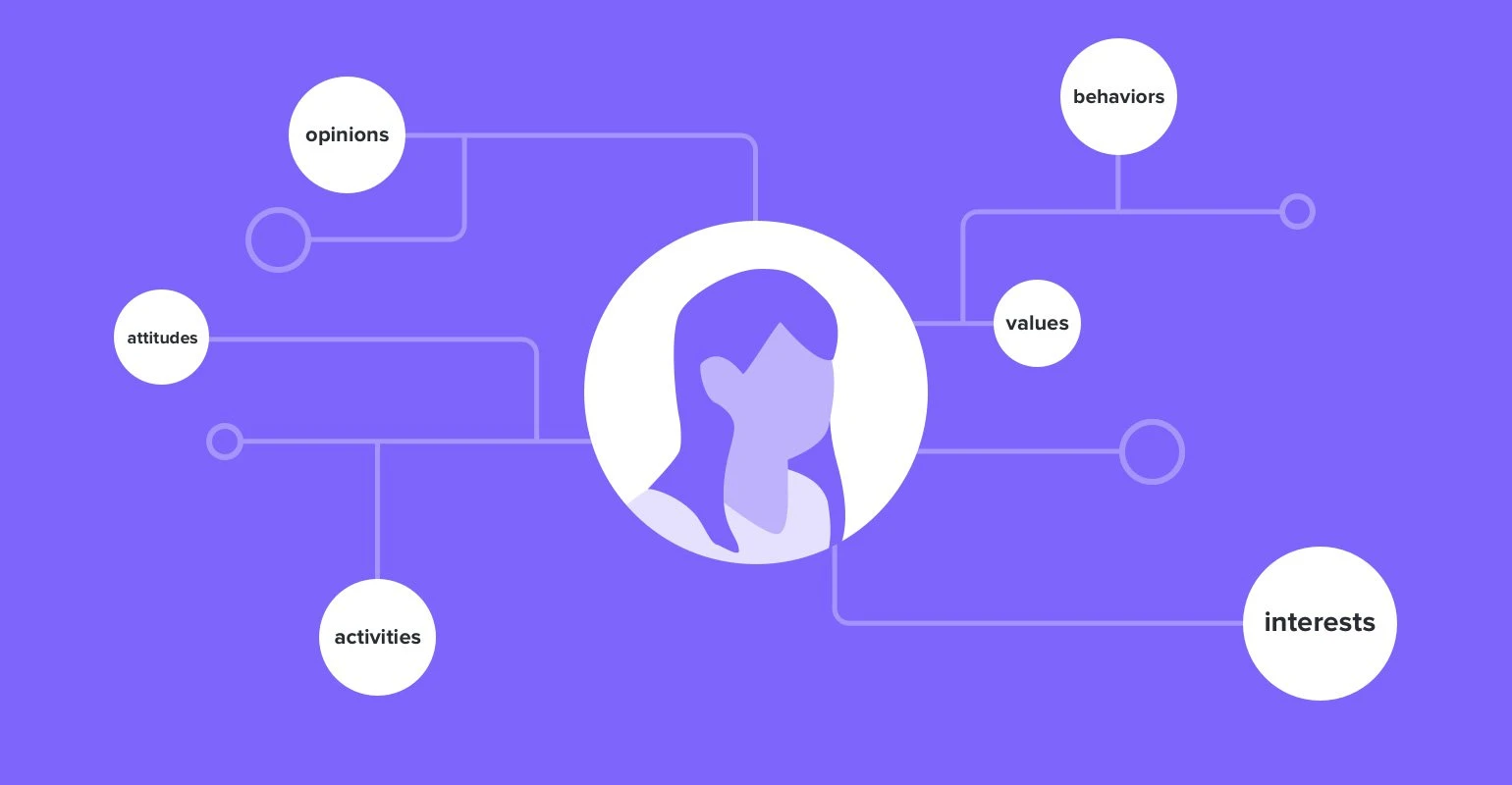
First, you'll want to get started by defining your segmentation goals.
What are segmentation goals?
Segmentation goals start with your overarching email marketing goals.
What are you trying to achieve through email?
How will segmenting your list help you achieve those goals?
Let's say your goal is to get bigger open rates and a more engaged audience. You can then filter your email list to send different messages to the active readers and to the passive ones.
Once you’ve settled your goals, it’s time to decide how you’ll incorporate segmentation into your email marketing strategy.
6 email segmentation strategies to get started
When done right, email marketing segmentation will help you to send more personalized messages and ramp up your engagement. One of the best ways to do this is with behavioral segmentation—where segments are created directly by actions your subscribers take.
Behavioral segmentation is the most powerful way to segment because the subscriber is triggering the segmentation based on real actions.
You can segment using many different online behaviors, such as when subscribers click certain links in your email, visit certain web pages or make a purchase on your site.

Behavioral segmentation and automation work together in MailerLite. Your subscribers can be sent different content based on their actions.
For example, when a subscriber clicks a link in your newsletter, it triggers an email automation workflow that can send an email or add the subscriber to a new group. Everything is automated so you see the results without putting in a lot of work.
1. Segment by signup channel
At MailerLite, we write content about all types of digital marketing including email marketing, transactional emails, e-commerce and website design to name a few.
We can create different interest groups based on the blog topics they read that inspired them to signup for our newsletter. So if a subscriber was reading an e-commerce article, we know that they will appreciate more e-commerce content in the future.
Segment your users according to the signup channels. The ones that signed up from your blog might be more interested in content about your company. The ones that signed up from your e-commerce site might want to know more about your products so that you can guide them down the sales funnel.
You can create a different group for each form or integration. Subscribers signing up through a webform or via an integration will be assigned (tagged) with their corresponding interest group.
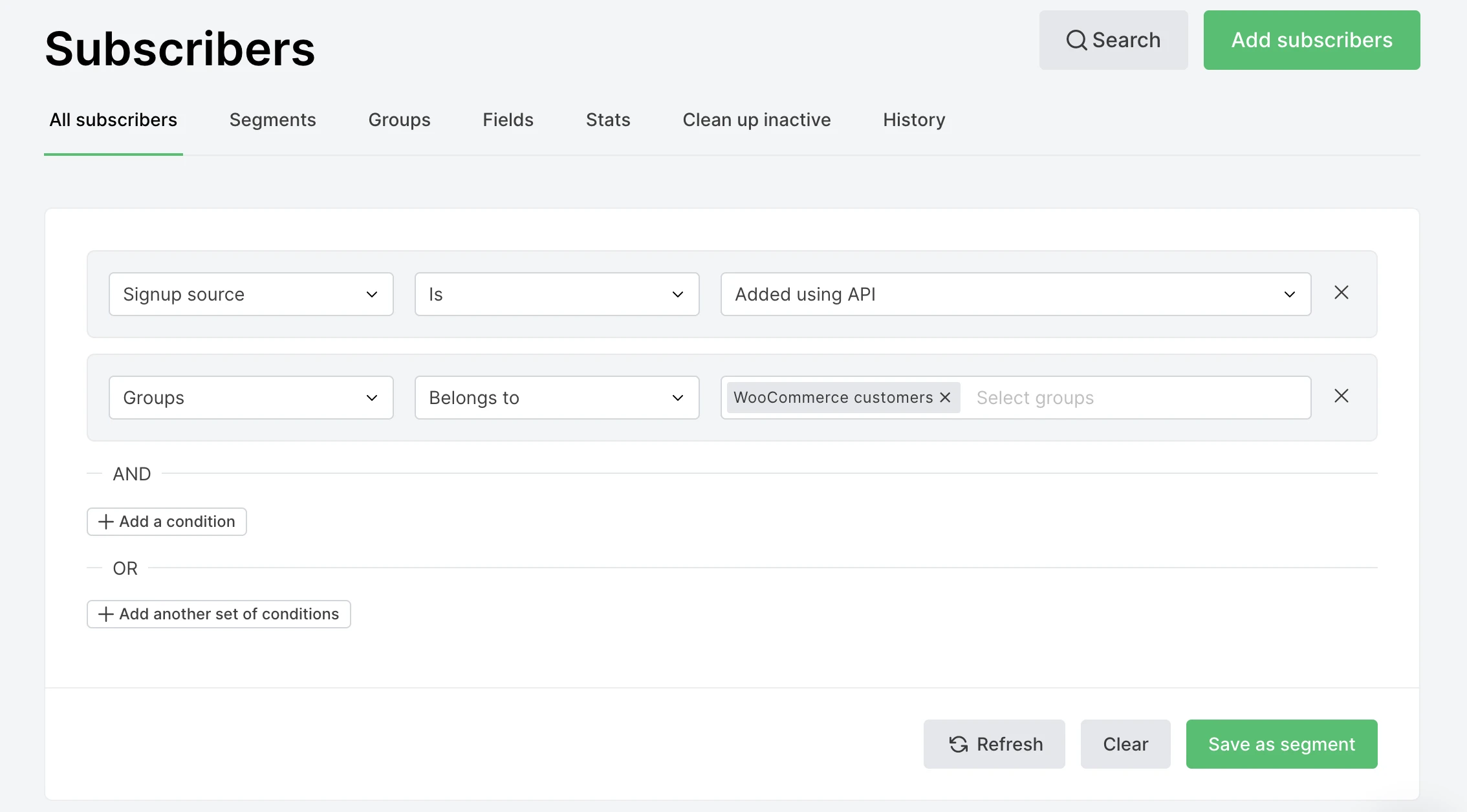
2. Segment by customer journey
Your subscribers are all at different points of getting to know you and your company. Some people are new, while others have already become customers and love hearing from you.
Another valuable way to target your list is to segment subscribers based on where they’re at in their customer journey.
Your loyal customers should receive different promotional emails from those who just joined your list. New subscribers would be more likely to expect a welcome email.
Let's say you have a multi-step welcome sequence that includes content specific to new subscribers that drips out over a few days. You can make a segment that includes subscribers that are active in that workflow in order to exclude them from receiving regular campaigns until they’ve completed the onboarding process.
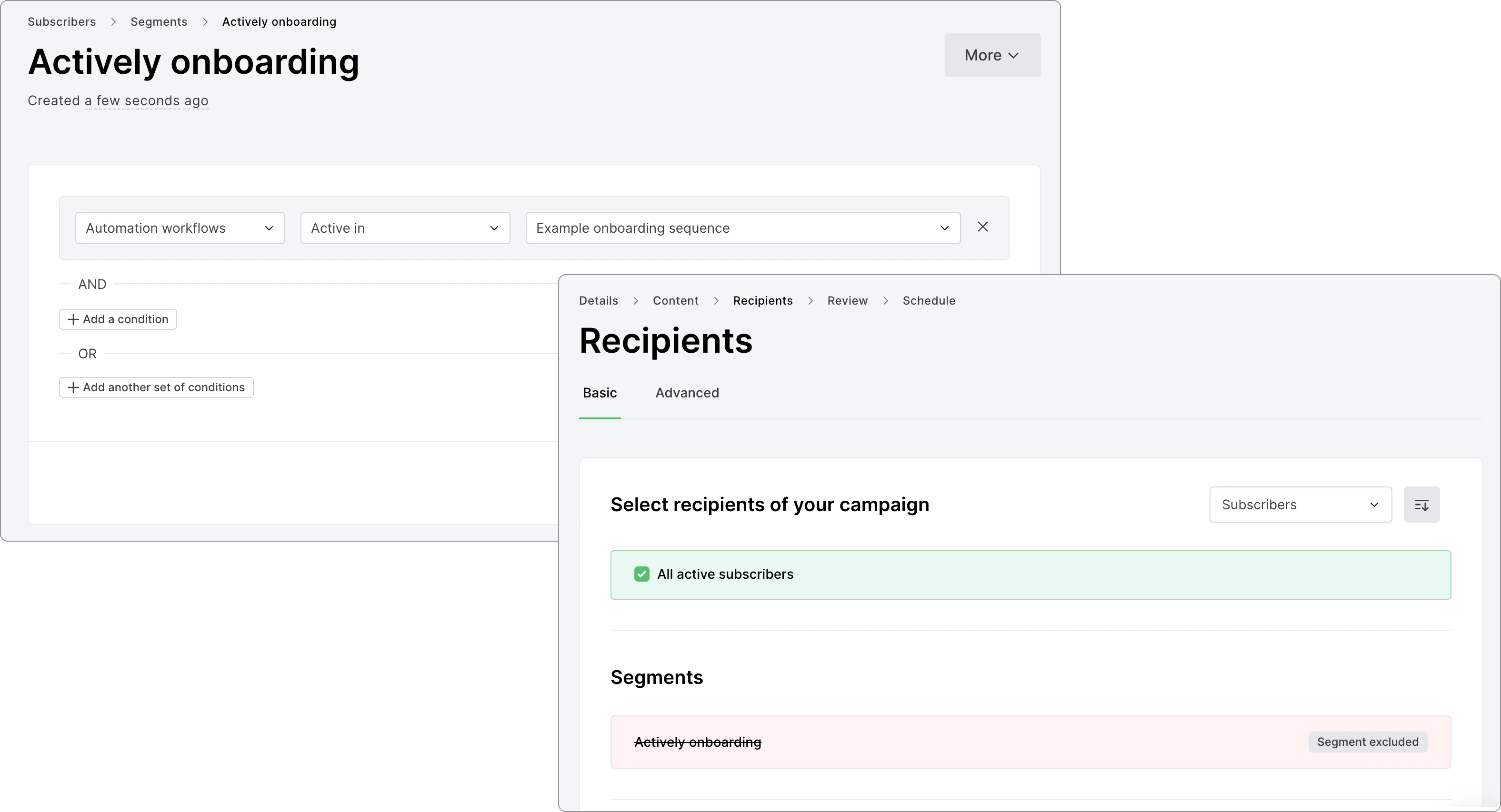
Once subscribers have finished the onboarding workflow, they’ll no longer meet the condition of segment membership and will automatically be removed from the segment.
3. Segment by prior purchases
Using MailerLite e-commerce integrations, you can segment your list based on prior purchases and use purchase history to send them new emails based on their style or interests. This type of recommendation marketing makes up over 35% of Amazon’s business!
For example, someone who just bought a new pair of sneakers from an e-commerce store might need waterproofing spray or socks. You can see in the newsletter below how a personalized email focused on prior purchases can be so relevant and effective.
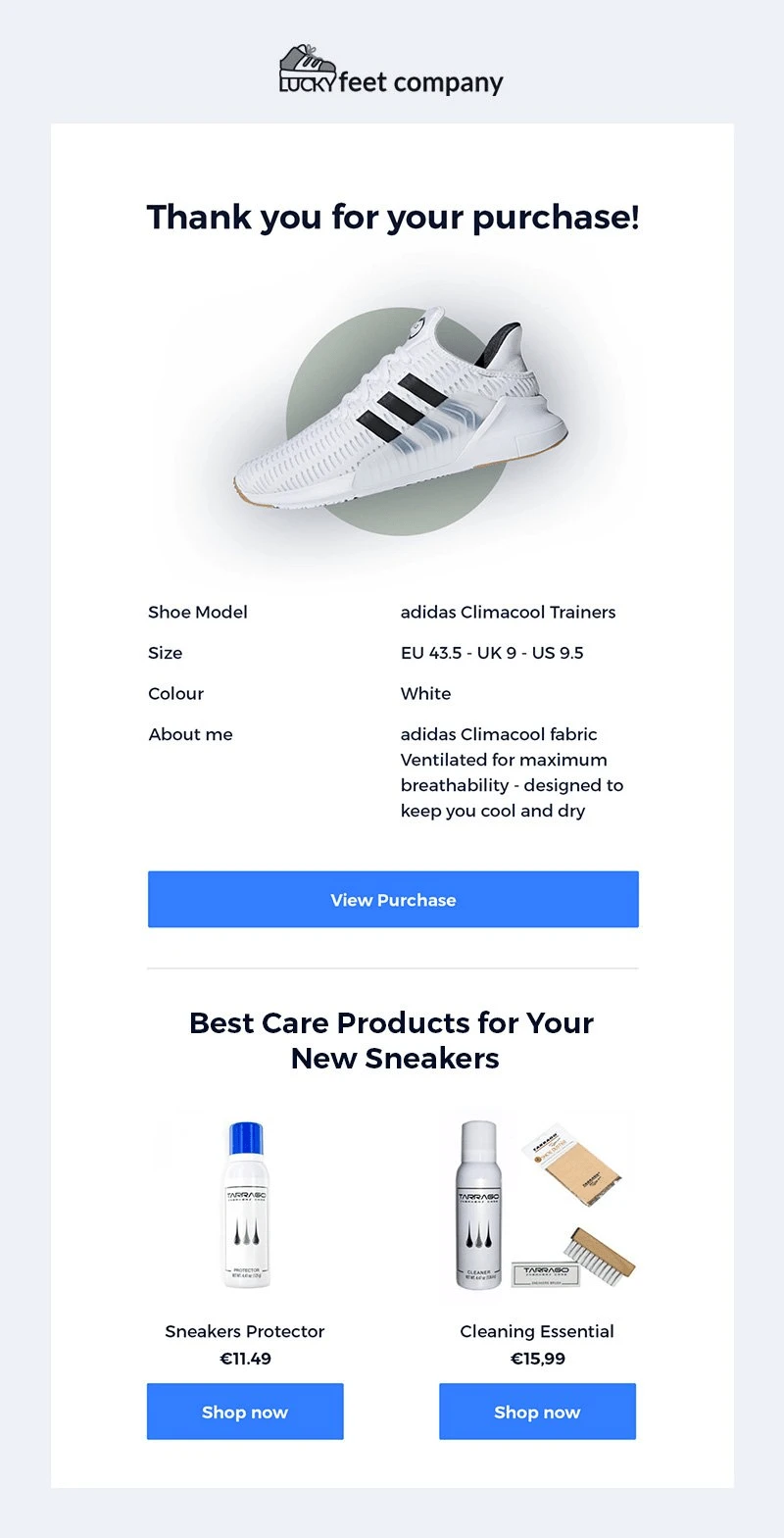
4. Segment by email engagement
Another way to look at your subscribers is by engagement. Take a look at your email metrics and separate the less active subscribers from those who engage often. This way, you can create a segment of highly-engaged readers and offer them different incentives or encourage them to share content.
Your main two engagement metrics are open rates and click rates. MailerLite’s subscriber filter has a built-in Time inactive setting that you can use to segment. You enter the number of days a subscriber hasn’t opened or clicked an email, and it will find all inactive subscribers for you.
Armed with this information, you can send a dedicated campaign designed to re-engage your inactive subscribers, just like this one from Animoto below.

Alternatively, you can target your active subscribers by sending them other types of emails such as surveys or referrals to learn more about them and keep the momentum going.
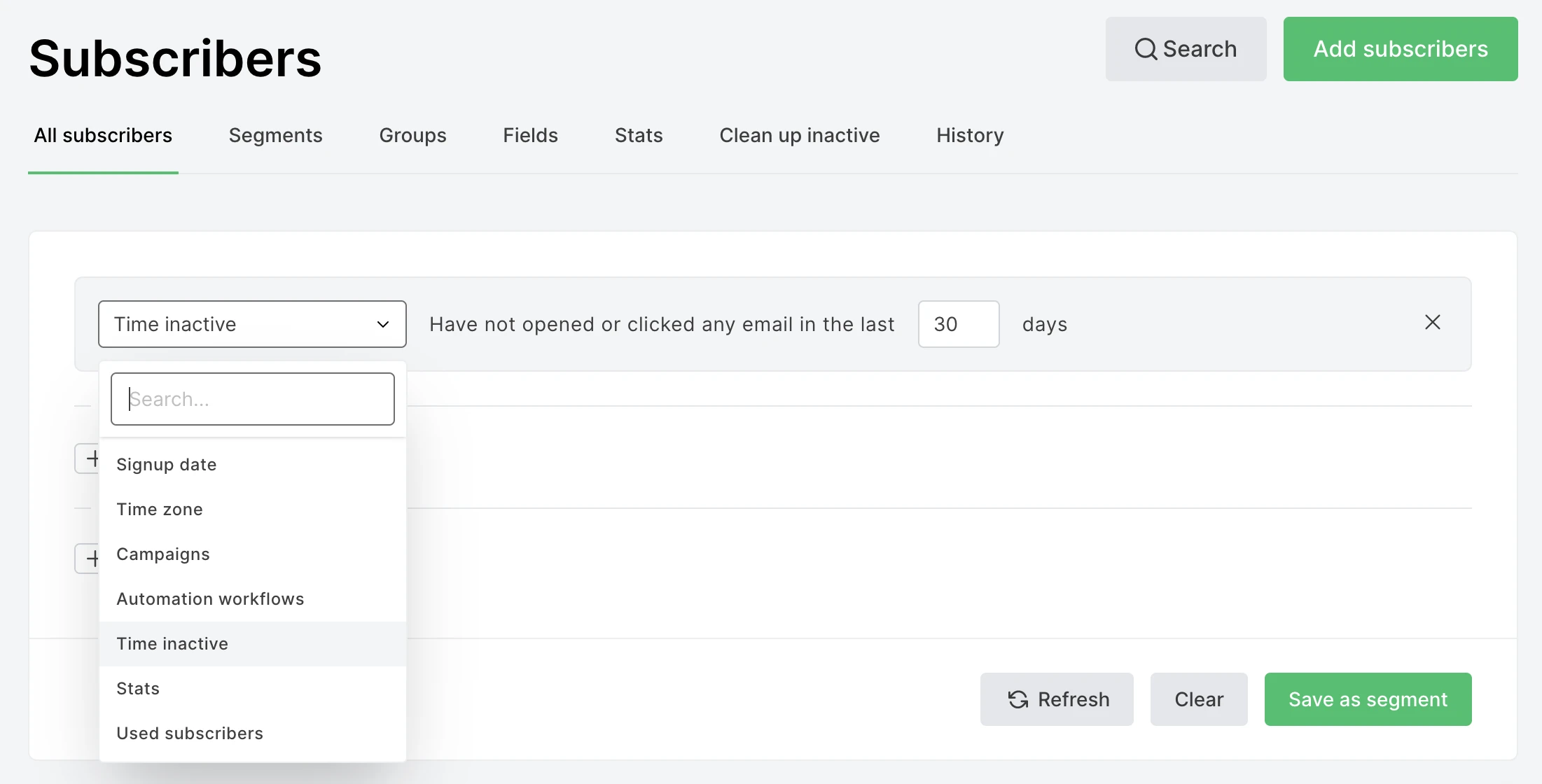
5. Segment by survey results
Customer happiness and user experience are paramount to retaining customers and growing your business. The best way to monitor happiness is to send your subscribers surveys via email.
You can use survey blocks to ask your customers what they thought about a certain product, how they like your content or any other type of question that’s relevant to your business.
At MailerLite, we send out a Net Promoter Score (NPS) to get a temperature reading on how we are doing. Based on how people answer our survey, they are automatically added to a specified group and receive an email message crafted to address their survey answers.
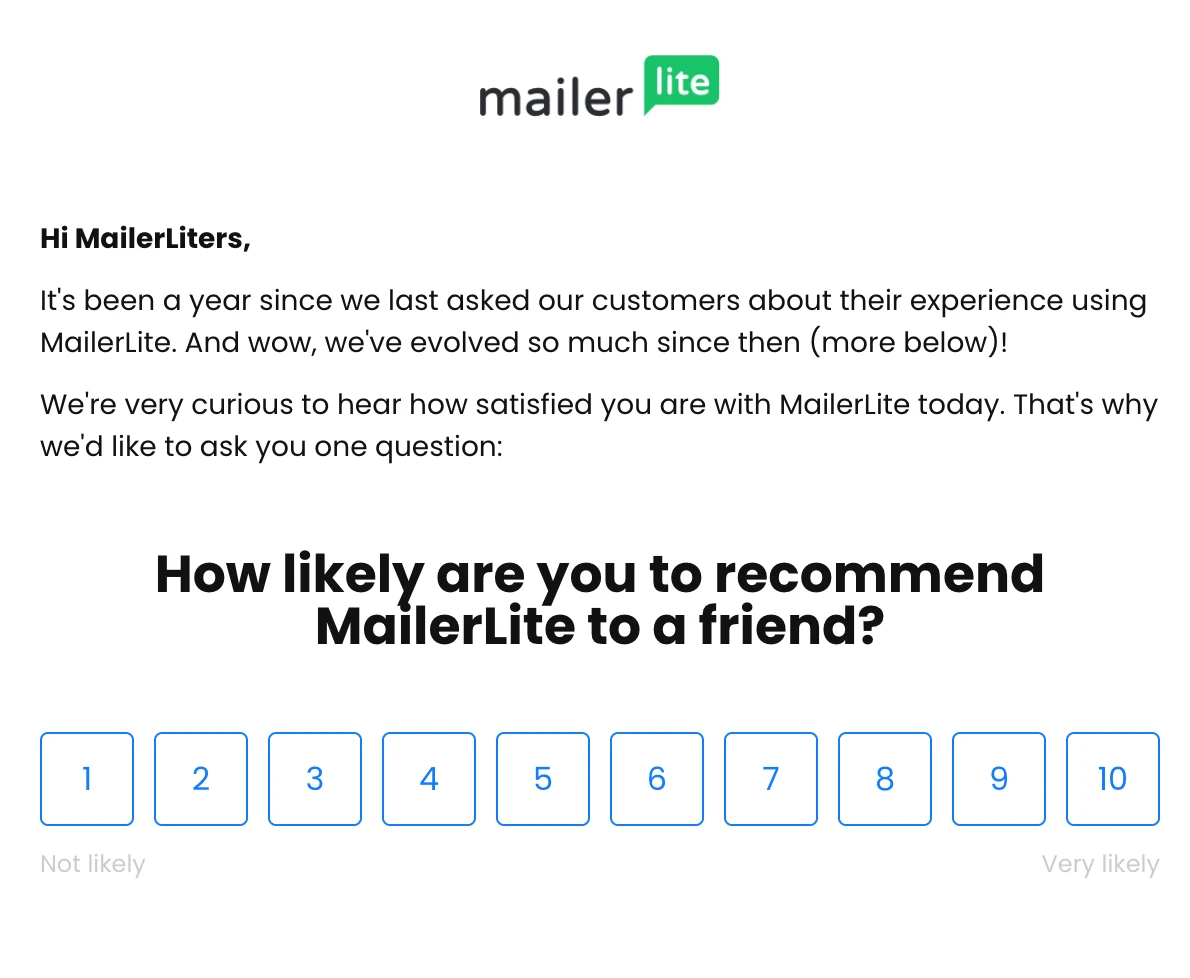
In this case, those who ranked between 1-8 were segmented as ‘not so happy/neutral’, while people who clicked 9-10 were segmented as ‘happy customers’.
Each group then received a separate follow-up email, based on how they responded—creating a more personalized experience for everyone!
Check out this article if you want to learn more about our NPS customer feedback experience.
6. Combine multiple filters
Combining multiple fitlers allows you to create segments that are fine-tuned precisely to target a very specific audience.
For example, you can find subscribers from a particular region (assuming you have the data) who are:
Interested in a specific product
Have spent more than $100
Have been inactive for the past 3 months
You can combine these 3 filters and send the new segment a targeted re-engagement campaign, maybe offering a discount to win them back.
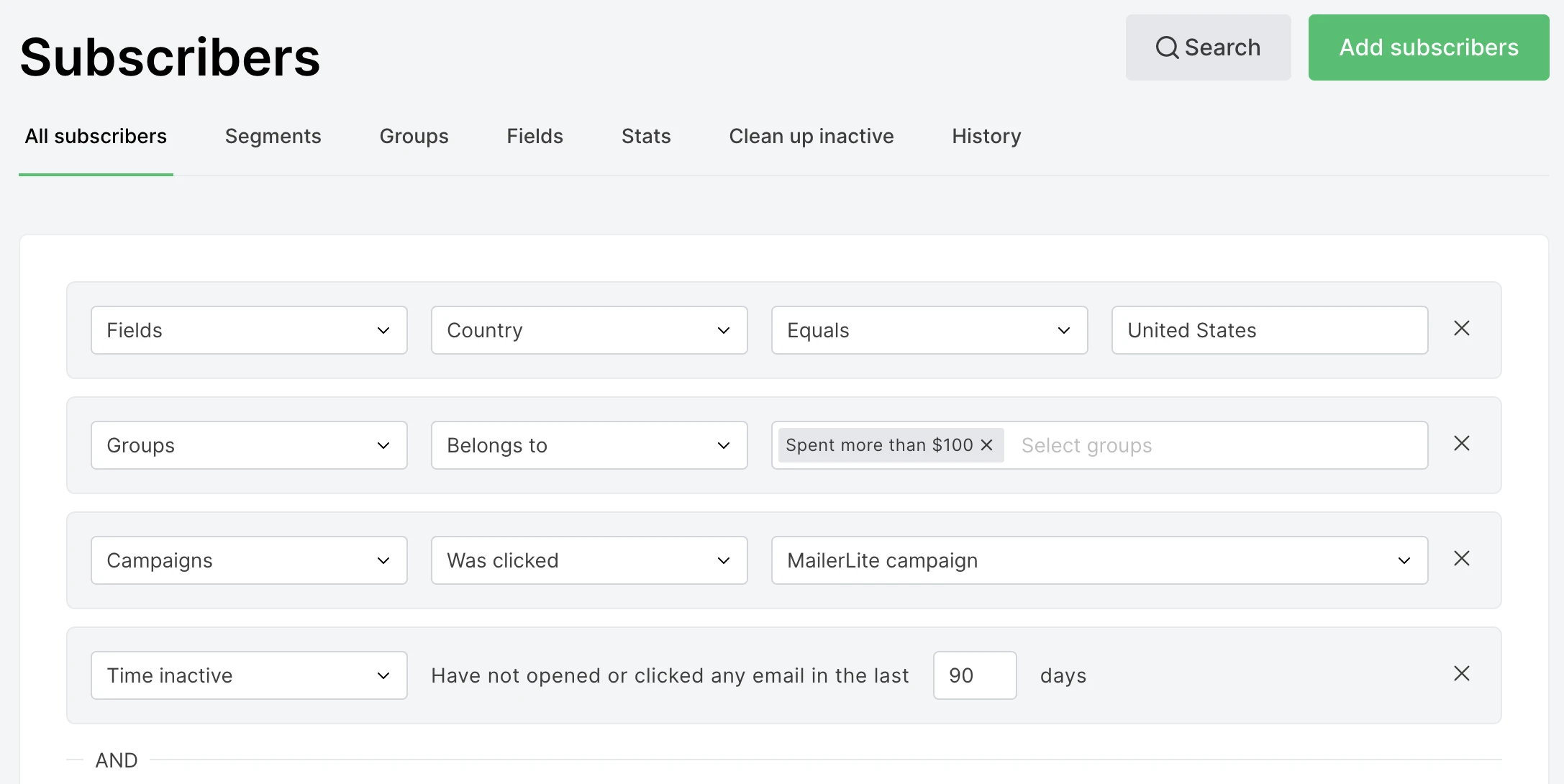
7 more segmentation ideas to explore
Although we’re big fans of behavioral segmentation strategies, there are also plenty of other ways to segment your subscribers!
1. Segment by geography 🌎
Geographic segmentation divides your subscribers by where they live. Segmenting based on geography is an easy way to send targeted emails based on regional factors like weather, local customs or events. With MailerLite, you already have geographic data on your subscribers if they signed up with a MailerLite form.
You can use location-specific content to improve relevancy, such as using the local language, referring to local events or focusing on special offers only valid in that location. You could even make it about the weather!
For example, let’s imagine you’re selling winter jumpers. You could send an email with a winter-themed subject line to all your subscribers in Australia and New Zealand (or wherever it’s winter by the time you read this guide ⛄)!
2. Segment by preferences ✅
On your signup form, or in later campaigns, you can ask people to check boxes stating their email preferences. This could then automatically add them to segments, which will receive emails based on their interests.
For example, let’s imagine you have an arts and crafts newsletter. You might have some subscribers who are more interested in painting, while others prefer knitting or DIY. You could send an opt-in form where people could select which emails they would like to receive, so that they can enjoy more relevant messaging from you in the future.
3. Segment by reviews 💬
We’ve talked about customer surveys, but what about reviews? You could segment your subscribers based on whether they have written a review or not. This could highlight loyal customers, and also those who might need a little nudge to share their experience.
For example, you might send a reminder email to those who haven’t left a review while sending a thank you message with a discount coupon to those who have.
4. Segment by lead magnets 🧲
Perhaps your subscribers signed up to access a particular lead magnet. This could give you extra clues about their interests, creating an opportunity to follow up with more emails related to it.
Let’s say you offered a beekeeping ebook for people who signed up to your newsletter. People who signed up are probably interested in bees! So you could send them more emails about beekeeping further down the line.
5. Segment by demographic 👪
Demographic segmentation divides your list with quantifiable characteristics of people groups. Examples of demographics include age, gender, income, and ethnicity.
Let's say you are an insurance company that offers different plans based on age. Instead of sending a long, generic email listing each plan for each group, you can segment the list and create shorter, more relevant emails targeted to each age group.
6. Segment by social media activity📱
Do you have subscribers that are also active on social media? These are the people you want to connect with and cultivate a stronger relationship. They can share your content and provide a much-needed boost.
For example, by connecting your Twitter with MailerLite through Zapier, you can create or update subscribers when they follow you, mention you or like a Tweet, then use that data to segment subscribers by social media activity.
7. Segment by job role 💼
If you are a sales organization, it is important to reach the right person in the organization that makes decisions. A way to accomplish this is to segment by roles within the company, so certain emails go to the management team while different emails go to the employees.
MailerLite makes it easy to create email segments
Our subscriber management feature provides all the tools that you need to organize your lists and to manage your segments. MailerLite allows you to set your rules and automate the process.
Keep in mind that segments in MailerLite are dynamic, which means that subscribers are automatically added or removed if they meet filter conditions.
Here’s how you can use Mailerlite’s real-time subscriber filter to quickly find, group and segment your subscribers.
Here's a video tutorial to get you started:
Use custom fields to create super-targeted segments
Fields are where your subscriber data is stored (name, last name, email, etc). Custom fields are fields you create yourself based on the information you need to store.
Create custom fields and add them to your signup forms to build segments using information that’s hyper relevant to your business.
For example, if you’re an event planner and you want to create a segment of subscribers who are planning a 2024 spring wedding in Miami, you could create and add the following custom fields to your signup form:
Event type
Event date
Event location
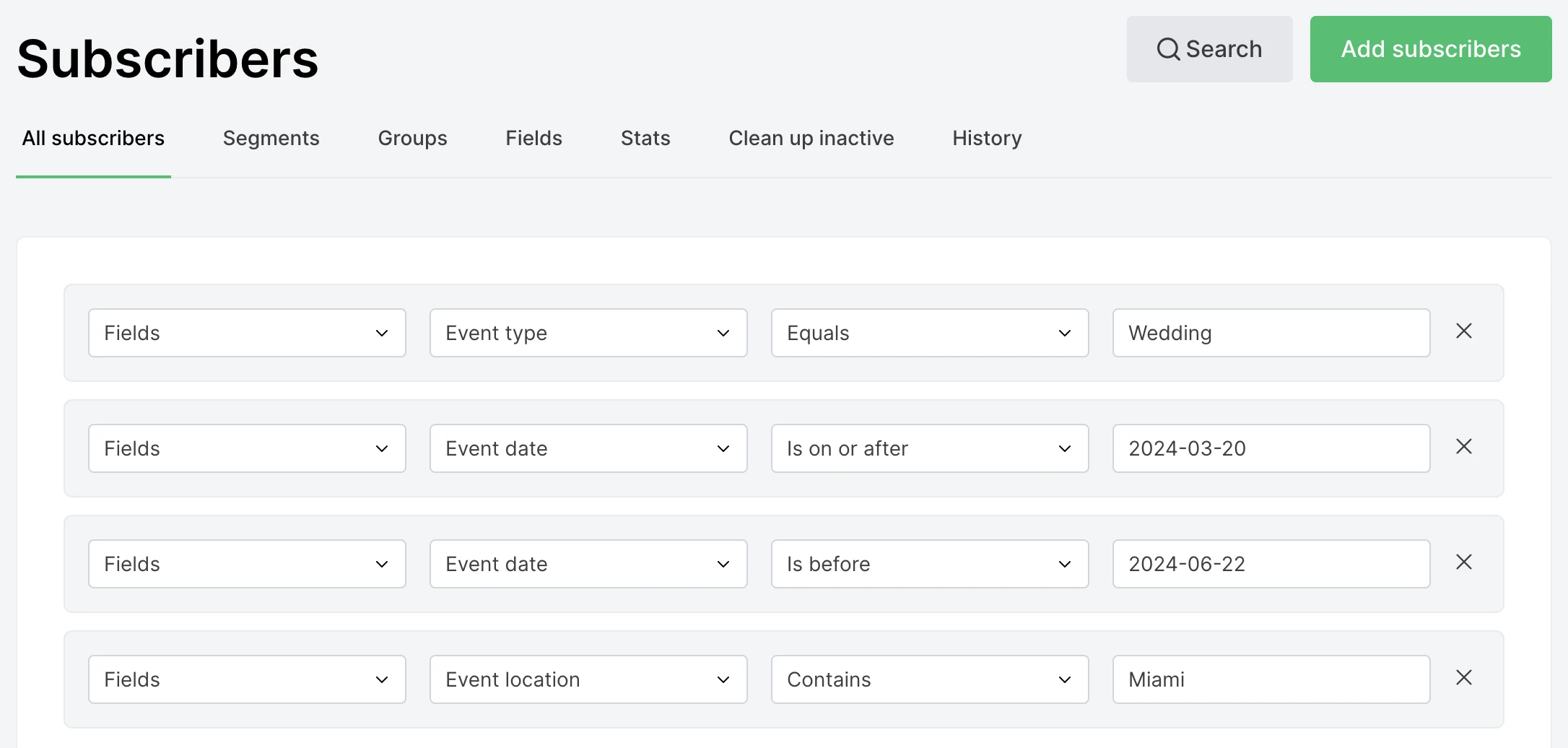
Combining segmentation with automation
Segmentation is a powerful tool to help you target the right message to the right person. Now, anyone can take segmentation to the next level by combining it with automation. When you let subscribers self-segment using automation, your messages are not only relevant, but they will be delivered automatically at the perfect time.
For more information and examples about email marketing automation, check out our Ultimate Guide to Automation.
That’s all, folks!
Segmentation makes your subscribers feel like VIPs, because it shows that you care enough to personalize their experience. Start by planning your goals, and then identify which of these segmentation strategies can help you get there. (Spoiler—your engagement rates will skyrocket!)
